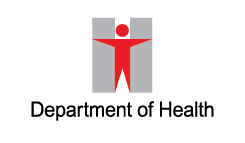Beware of Heat Stroke
What is heat stroke?
Heat stroke is a condition caused by the body's inability to effectively dissipate heat in extremely high-temperature environments. Under normal circumstances, our bodies have the remarkable ability to regulate temperature to keep us safe, especially when it gets hot outside. When we feel warm, our internal temperature control system kicks in. This triggers responses like sweating and faster breathing to help cool us down.
However, in extreme heat, heat dissipation becomes difficult and these natural cooling methods may become overwhelmed. If we fail to cool down properly, we risk experiencing heat exhaustion or even heat stroke.
Symptoms of heat exhaustion include dizziness, headache, nausea, shortness of breath and mental confusion. If the body temperature rises to an extreme level (typically above 40°C), it can lead to heat stroke, which is much more serious. Signs of heat stroke include convulsions or a loss of consciousness. If you or someone else is showing symptoms of heat stroke, it is crucial to act quickly. You need to cool the body down immediately and seek first aid. Failing to do so can put the person’s life in great danger.
Who is at risk?
Infants and children, the elderly, pregnant women, individuals with chronic illnesses, such as heart disease or high blood pressure, outdoor/manual workers, and overweight people are more susceptible to heat stroke.
Precautionary measures
We should all pay attention to the weather warnings issued by the Hong Kong Observatory and take the following measures during very hot weather:
- Hydrate in a timely manner to prevent dehydration.
- Wear light-coloured, loose-fitting and breathable clothing to minimise heat absorption and facilitate perspiration and heat dissipation.
- Keep the room well ventilated, e.g. by opening windows, and using a fan or air-conditioning.
- Avoid strenuous exercise or prolonged activities (e.g. hiking and trekking), as heat, sweating and exhaustion place additional demands on the body.
- Arrange outdoor activities in the morning or in the late afternoon if possible, and bring enough water.
- Avoid beverages containing caffeine (e.g. coffee and tea) as well as alcoholic beverages, which may speed up water loss through the urinary system.
In addition, groups that are at risk should pay special attention to the following:
- Avoid taking infants and young children outside under high temperature. Otherwise, adults should ensure they stay in places with moderate temperatures and good ventilation or air-conditioning. Infants and young children should never be left unattended in a confined space (e.g. vehicle).
- The elderly, pregnant women, individuals with chronic illnesses or overweight people should pay close attention to one’s own health condition, and seek help as soon as possible if you experience any abnormalities or fluctuations in health indicators (e.g. blood pressure, heart rate, etc.) or health conditions. Avoid going out when the temperature is high. When staying indoors, make sure there is good ventilation, or turn on a fan or an air-conditioner to keep the indoor temperature appropriate. High temperatures can worsen the condition of people with chronic illnesses (e.g. cardiovascular and respiratory diseases). Ensure an ample supply of your usual medication and keep in contact with your family members, neighbours and the community. Seek help immediately if you feel unwell.
- Outdoor/manual workers are advised to reschedule your work to cooler hours as far as feasible. Otherwise, provide shade at workplaces where practicable and use ventilation and heat dissipation equipment. Adjust the pace of work gradually, and take breaks in the shade where appropriate to regain strength.
If symptoms such as dizziness, headache, nausea, shortness of breath or confusion develop, rest and seek help immediately, and seek medical advice as soon as possible.















